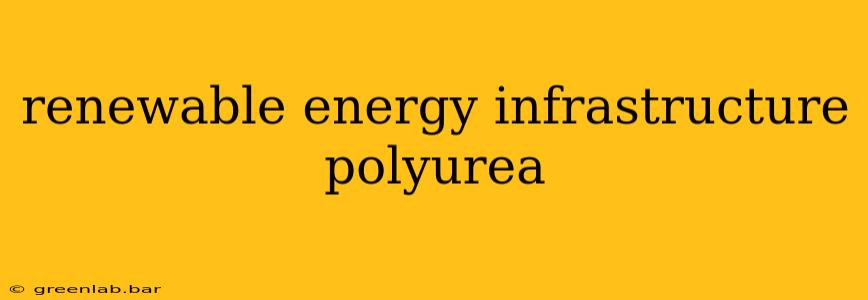The global shift towards renewable energy sources is accelerating, demanding robust and reliable infrastructure to support solar farms, wind turbines, and other clean energy projects. This infrastructure faces harsh environmental conditions – extreme temperatures, UV radiation, and exposure to the elements – requiring materials capable of withstanding these challenges for decades. Enter polyurea, a high-performance elastomer increasingly recognized for its unique ability to protect and extend the lifespan of renewable energy assets.
What is Polyurea?
Polyurea is a fast-curing, spray-applied elastomer formed by the reaction of an isocyanate component and an amine component. This rapid curing process (often seconds) allows for quick project completion and minimal downtime. Its superior mechanical properties, including high tensile strength, elongation, and abrasion resistance, make it an ideal protective coating for various renewable energy infrastructure components.
Key Advantages of Polyurea in Renewable Energy Applications:
-
Exceptional Durability: Polyurea's exceptional durability is a key selling point. It resists cracking, peeling, and degradation from UV radiation, chemicals, and extreme temperatures, significantly extending the lifespan of coated equipment and reducing maintenance costs. This is crucial for renewable energy projects, which often operate in remote or harsh locations.
-
Rapid Curing Time: The fast curing time of polyurea is a significant benefit for large-scale renewable energy projects. This minimizes downtime, accelerates project completion, and reduces labor costs. This speed is particularly advantageous in situations where quick repairs or protective coatings are needed.
-
Seamless Protection: Polyurea forms a completely seamless coating, eliminating potential points of failure or corrosion. This is especially important for protecting complex structures and preventing water ingress.
-
Chemical Resistance: Polyurea exhibits excellent resistance to a wide range of chemicals, including acids, alkalis, and salts, making it suitable for protecting infrastructure exposed to corrosive environments.
-
Corrosion Prevention: The seamless, protective barrier provided by polyurea effectively prevents corrosion, a major problem for metallic components in renewable energy systems exposed to moisture and salt spray.
Polyurea Applications in Renewable Energy Infrastructure:
Polyurea's versatility makes it suitable for protecting a wide range of renewable energy infrastructure components:
1. Wind Turbine Towers and Blades:
Polyurea coatings protect wind turbine towers and blades from corrosion, abrasion, and UV degradation, extending their service life and reducing maintenance needs. The coating's flexibility allows it to accommodate the movement and stress experienced by these components during operation.
2. Solar Panel Mounting Systems:
Polyurea coatings safeguard solar panel mounting systems from rust and corrosion, ensuring the long-term stability and performance of the solar farm. The coating's resistance to UV radiation helps maintain the structural integrity of these vital components.
3. Underground Pipelines and Cables:
Polyurea's excellent corrosion resistance and ability to form a seamless barrier make it ideal for protecting underground pipelines and cables associated with renewable energy projects, preventing damage from soil moisture and aggressive chemicals.
4. Energy Storage Systems:
Polyurea can provide superior protection for the components of energy storage systems, particularly those exposed to harsh conditions. The coating's flexibility and durability are crucial in this application.
Conclusion:
Polyurea is emerging as a critical material in the construction and maintenance of renewable energy infrastructure. Its unique combination of durability, rapid curing, seamless application, and chemical resistance offers a significant advantage in protecting valuable assets and ensuring the long-term success of clean energy projects. As the renewable energy sector continues its rapid expansion, the role of polyurea in ensuring the reliability and longevity of this vital infrastructure will only continue to grow.

